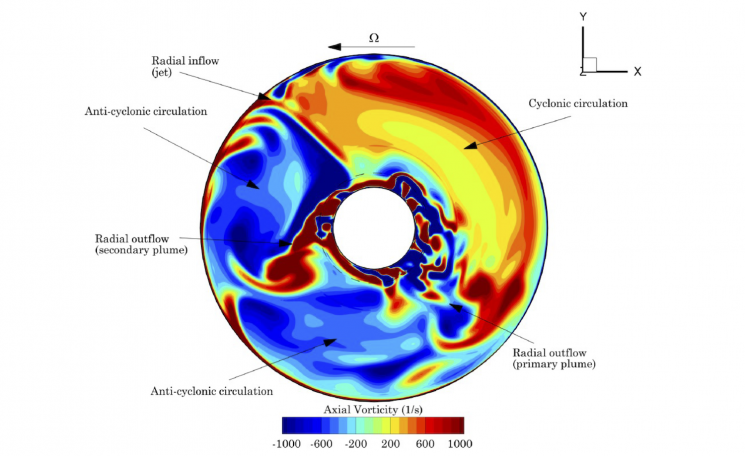Rotating cavities

- Rotating cavities (text version)
The image shows contours of axial vorticity in a cavity rotating in the anti-clockwise description. The rotation causes a complex flow pattern to emerge including regions of radial inflow and outflow towards the central axis, and regions and cyclonic and anticyclonic recirculation.
The rotating cavities are critical to the functioning of modern gas turbines but also pose a direct parasitic loss to efficiency. Minimising these losses through physical understanding and modelling is crucial to meeting net-zero aviation goals and is also opening new avenues of research in electric motor cooling.” Dr Mark Puttock-Brown
Senior Lecturer in Mechanical Engineering
The flow structure and heat transfer interactions within rotating cavities in gas turbines provide a particularly complex problem and have been studied for several decades. Whilst a mature research field, the convergence of both accessible high-performance computational resources and advanced experimental techniques means we have the tools to make significant advances in our understanding of the physics of these systems. These advances allow the development and validation of accurate digital tools used by industry to design the next generation of engines whilst reducing the associated lead-times and number of costly full-engine tests.
The TFMRC is home to one of only three active experimental facilities in the world capable of producing the engine like test conditions within a laboratory. As a laboratory scale experiment, it is possible for us instrument and measure more than what is possible with an engine, allowing us to probe in ever more detail the complexities of this phenomena.